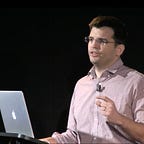The 7 league boots to learn programming
How to ease your way in programming as quick as possible?
1. Set Goals. Why do you want to program. Keep them in mind.
Goals will help you keep on track. It is easy to lose yourself. Keep coming back to your goals.
2. Based on your goals, limit yourself
Stick to what you have decided, you will have time later to explore new areas. Programming is a vast subject. If you do a little of everything, you will not know anything.
3. Do not follow tutorials, build the thing yourself.
It is easy to get lost in tutorials, reading one, trying a little, and not finishing anything, because of too much copy pasting and no clear understanding of how things work. Tutorials are rabbit holes. You will think you do not know enough and get lost.
4. Learn the basics, that you can (re)use all the time.
Make sure you understand what are variable, logical constructs, loops and functions. Then you will learn more complex things such as data structures, objects, algorithms, etc. It will come when you need them.
5. One is good, two is better, three….
Learn the basics of one language, then learn another, but from another family of language. Programming languages can be classified in different families or paradigms: Object Oriented, Functional, Aspect Programming, Logic Programming, etc. This will broaden your understanding and open your mind.
6. Follow a programming course
You do not need a computer science degree, you need a programming course, a bootcamp. Basically you need a course where you have projects to code.
7. Code, Code, Code
This is the secret, just code. Reading about coding will not make you a programmer
That was the first step, and what a step! Continue, there is a lot of small things to learn, none is really complex but the complexity comes from the amount of small things you need to learn.
For example, if you want to build a simple website you will need to know:
1. A way to display your content: html
2. A way to style your content: css
3. a way to add some animation or movement on the page: Javascript
4. Ideally a way to store your content: a database which comes with its query language (e.g. SQL)
5. A server side language: Javascript (you are in luck it works on the Frontend and on the Backend)
6. A way to share or serve your site to the public: a server
7. Understand why you need all the above…
That is the second step…. So take one step at a time, you will get there.
For any advice do not hesitate to contact me!
